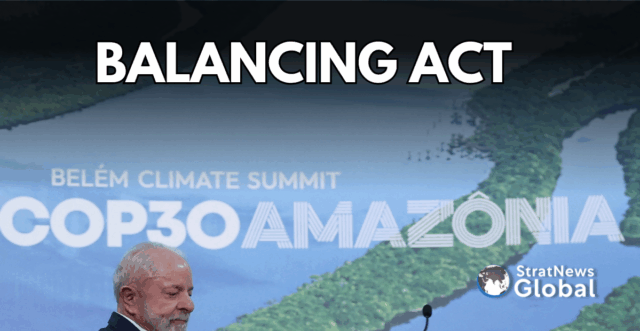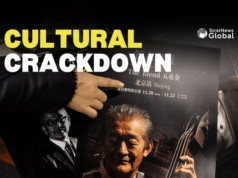On the banks of the Guama River, where the city of Belem presses up against the vast green Amazon, Brazil is pioneering an economic model at COP30 designed to help locals profit from a healthy rainforest.
Instead of clear-cutting trees for cattle and mines, the state government of Para this year unveiled a research and development program designed to help locals transform forest products like acai and Brazil nuts into goods for global markets.
It is a small part of a big plan for Brazil, as Belem hosts the COP30 international climate summit, to show the world that it can find a way to protect the Amazon rainforest and ensure jobs and money for its residents.
“Our intention is for Para to turn its forest assets into a new strategic sector that transforms our biodiversity into a new economy,” Para Governor Helder Barbalho told Reuters.
“This will help us reduce dependence on extractive, greenhouse gas-emitting industries in favor of low-emission economies that value the living forest.”
New Processes
Para’s government in October opened the 300 million real ($56.29 million) Bioeconomy and Innovation Park down the river from Belem’s open-air Ver-o-Peso market, where vendors have been selling rainforest products since 1901.
The new facility includes 6,000 square meters of warehouse space filled with machinery where entrepreneurs share knowledge and experiment with forest commodities to come up with new foods, scents, and other products to entice the world’s consumers.
Local chef Leonardo Souza was among the first to use the new park’s labs. He said they helped him scale up production from 60 jars per day of artisanal salt flavored with Amazonian herbs to about 1,000.
“We worked with 42 families supplying herbs. Now it will be around 200,” he said.
Bioeconomy Businesses
The idea of a robust bioeconomy builds on an already solid base for the state of Para.
A 2019 study by IDB, the Nature Conservancy, and Brazilian cosmetics giant Natura found that 30 forest product value chains in the Brazilian state generated 4.24 billion reais in local income, nearly matching 4.25 billion reais from livestock grazing.
“This is not a niche market. This can be very muscular,” said Paula Caballero, the Nature Conservancy’s Latin America director.
Natura buys Amazon ingredients, including cacao, murumuru, and pataua oil for its line of health and beauty products.
Carlos Nobre, a Brazilian Earth system scientist, said that while bioeconomy businesses are now a small part of the overall Brazilian economy, they can pay three to seven times better than soybean farming or ranching and employ many more people.
Acai Boom
Among the most ubiquitous Amazon products is acai, an antioxidant-rich berry whose popularity as a health food in the U.S. and elsewhere has driven market growth projections from $1.23 billion in 2024 to $3.09 billion by 2032, according to Brazil’s government.
Every night, riverboats unload bushels of acai at Belem’s Ver-o-Peso market for shipment across Brazil and abroad.
Damien Binois, 35, said he launched his business, NOSSA! AÇAÍ, after being inspired by his first taste of acai in 2012, when he came to Brazil from France as a student.
Today, he exports to France, Spain, Ireland, and Belgium, sourcing from 150 local producers and providing technical assistance to 50.
Acai fetches about $11 per pot, up from $3–3.50 five years ago.
Coffee And Reforestation
Sarah Sampaio, director of NGO Amazonia Agroflorestal, helps small farmers grow organic coffee in southern Amazonia while reforesting land along the deforestation arc opened by the Trans-Amazonian highway in the 1970s.
Attracted to new jobs in the newly opened land, hundreds of migrants settled in the region. But those who tried cultivating coffee there learned it was easier to grow the bean sought by coffee drinkers around the globe under the shade of native trees.
When the lab opened, Sampaio said she saw an opportunity to expand her business with new types of packaging that could keep beans fresh and new blends for premium coffee.
Today, 234 families in cooperatives produce premium coffee blends sold in Brazilian supermarkets and exported internationally.
“We offer free soil preparation, coffee and native seedlings, and technical assistance,” Sampaio said.
(with inputs from Reuters)





